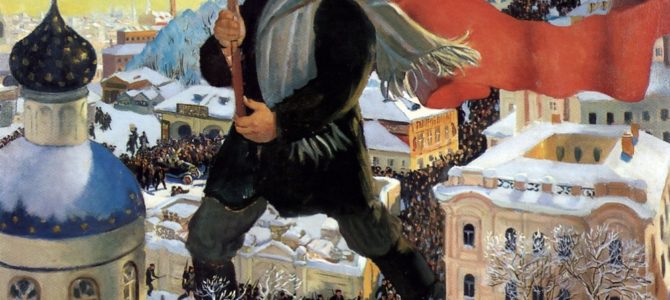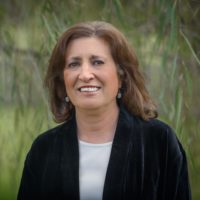
Of all the ways identity politics is used as a tool to sow hatred among people where there should be the potential for friendship, “critical race theory” is one of the gravest offenders. Every person of goodwill should know that judging people based on their physical characteristics is cruel and wrong.
This is not the nature of critical race theory, however. Rather, the insidious ideology is being used to promote estrangement rather than friendship, and hostility rather than goodwill. Indeed, the tactics used by proponents of critical race theory share many parallels with old tactics used by the Bolsheviks.
As such, federal employees and those who work for corporations that do business with the federal government sucked into the poisonous vortex of critical race theory can thank President Trump for ordering a stop to the promulgation of critical race theory. Thanks should also be sent to scholar Christopher Rufo, whose diligence brought the critical race theory venom to the forefront of Trump’s attention, and Russ Vought, director of the Office of Management and Budget, who is working to root out members of the administrative state who defy that order.
It’s important to remember that because very few of its activists have shown much sincere desire to end racism, critical race theory should not be taken entirely at face value. If a majority of its supporters were sincere, they would be willing to have fruitful discussions in a civil society that supports civil discourse. Rather, critical race theory’s agitators are committed to tearing down civil society on the pretense that it is an incubator for “systemic racism.”
If you’ve any doubt about that, consider the Smithsonian display on “whiteness” that condemned all elements of civil society, including politeness, hard work, self-reliance, logic, planning, and family cohesion. None of those are “white” values, but critical race theory frames them just so. This sort of animus proves that critical race theory “arguments” are non-starters and merely serve as convenient pretexts for power grabs.
Doused with critical race theory, the Black Lives Matter organization and its related Antifa-infused mobs are organized for the same purposes as all cult recruits: to recruit more people and to implement the desire to divide and conquer. The phenomenon can be seen as they surround people in vehicles or restaurants, demanding their victims raise a fist and recite slogans under the intense intimidation and implications of violence.
Indeed, agitators who deploy critical race theory have zero interest in ending racism. Instead, they’ve made essentially the same point over and over again: Racism is an unsolvable problem. If you’ve been tainted as “white,” there’s nothing you can do about it. You are eternally a racist, especially if you don’t believe you are.
Robin D’Angelo explains it all in her best-selling book “White Fragility.” Your only option is the cultist’s option: submit to your critical race theory overlords, then recruit others to do the same. If, however, you’re a black person who disagrees with all of this, well, then, “You ain’t black.”
As with all forms of identity politics and intersectionality, critical race theory stokes divisions between people where few or none existed before. It’s all about relational aggression and predatory alienation.
Let’s look at a perfect example of this process, a parallel case from Soviet history. As peasant farmers tended to be overwhelmingly religious, traditional, and family-oriented, the Bolshevik government hated them with a fiery passion. Increasing the acrimony further, the peasants resisted giving up their family-run farms—a roadblock to the Soviet leadership’s desire to exercise complete control over the nation’s food supply.
To collectivize agriculture, Soviet leader Joseph Stalin devised a plan to stir up hostilities among the peasants where resentments had never existed before. As would be the case later with Mao’s Red Guard (and today’s radical statue-toppling, Molotov-cocktail-throwing radicals), the Soviets used mobs of youth to do the dirty work.
The communist youth league, known as the Komsomol, went into villages to propagandize and incite divisions, turning formerly peaceful neighbors against one another. In his book “The Whisperers: Private Life in Stalin’s Russia,” Orlando Figes describes the situation:
The villagers had never heard such propaganda in the past, and many were impressed by the long words used by the leaders of the Komsomol. At these meetings, the villagers were told that they belonged to three mutually hostile classes: the poor peasants, who were the allies of the proletariat, the middle peasants, who were neutral, and the rich or ‘kulak’ peasants, who were its enemies. The names of all the peasants in these different classes were listed on a board outside the village school.
This process is eerily similar to the way critical race theory — and all identity politics — has been applied in America. You can see the same three divisions: victims, oppressors, and those who might save themselves by becoming “allies” of the victims.
Note the reference to the Komsomol using impressive “long words.” Today our miseducated youth are easily impressed by new terms such as “systemic racism,” “intersectionality,” and “white fragility.” Finally, the wokesters identify and condemn those marked as oppressors — doxing and canceling them by name — in a written list of names posted in the village. Today such work is helped along by media and Big Tech.
The whole idea is to sow chaos where there was peace — or, at least progress. It is to disrupt and destroy any sense of community a person may have. Figes continued: “These divisions were entirely generated by the Komsomol. The villagers had no previous conception of themselves in terms of social class. They had always thought of themselves as one ‘peasant family.’”
They then use those newly established identities to “rub resentments raw.” In “Rules for Radicals,” agitator Saul Alinsky described the process:
The organizer must first rub raw the resentments of the people of the community; fan the latent hostilities of many of the people to the point of overt expression . . . an organizer must stir up dissatisfaction and discontent; provide a channel into which people can angrily pour their frustrations . . . your function — to agitate to the point of conflict.
Conjuring up such hostilities is also the essence of what Karl Marx was aiming for in his call for “class consciousness.” The problem, as he saw it, was that people were busy with life and willing to live and let live. Or, to put it in modern terminology, they were “insufficiently woke.” All power elites likewise see social contentment as an impediment to their power.
In the same fashion, today’s critical race theory agitators call for a form of race consciousness that breeds in themselves the same sort of blind hate. Ironically, they’re like a photographic negative, a mirror image of the segregationists in Jim Crow days. We have been assaulted with many other forms of “consciousness” intended to sow hostilities and lawlessness: immigrant status, gender identity, sexual identity, and on and on. We are being overwhelmed.
Saddest of all is how critical race theory exploits the tragedy of racial divisions in America. The tragedy is thus reduced to nothing but a vehicle for a power grab by elitists in the circles of academia, media, and Big Tech. Ironically, those power elites are vastly and disproportionately white and in it for their gain. So, rather than serve as a balm for healing, critical race theory has proven to be poisonous to liberty, true community, and our common humanity.








